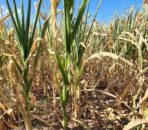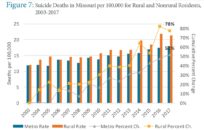The supply chain issues that started with toilet paper and computer chips in 2020 have morphed to disrupt nearly everything in our daily lives. As of late, news shows are highlighting weary parents who are scouring near and far for essential baby formula. At home in Appleton, I drove past two fuel stations that had bone dry tanks for two days last week, sending residents miles away just to find gasoline. Everyone is talking. Everyone is grumbling. Everyone is hastily adapting.
Meanwhile, farmers and ranchers continue to work through our own supply chain challenges. Critical items like fertilizer and crop protection products that are necessary for healthy, abundant crops are among the inputs we can no longer take for granted.

I recently wrote about the dramatic spike in energy costs and how it is affecting farmers. Modern farming requires many inputs, and supply chain disruptions coupled with higher production and transportation costs have sent their costs skyrocketing.
According to U.S. Department of Agriculture (USDA) data, U.S. farmers spent over $237 billion in farm production expenses in 2020. This year, USDA projects these costs will exceed $279 billion, a jump of almost 18 percent in only two years. Fuel saw the fastest inflation, with a 35.3 percent increase, but each of the 10 other categories also saw increases. Eight categories grew by double-digit percentages.
The cost of fertilizer has been by far the biggest headache for farmers across Missouri this spring. American Farm Bureau Federation analysis shows that ammonia for fertilizer more than doubled between September 2020 and December 2021. Liquid nitrogen was up 159 percent, and potash was up 134 percent. None of this is separate from energy costs. Natural gas accounts for 70-90 percent of the cost of nitrogen fertilizer. This means that every penny of increase in the cost of oil and gas directly impacts farmers’ ability to grow crops.
Mind you, this was all before Russia invaded Ukraine, which really threw the markets into a spin. Russia is a major player in all three main components of fertilizer. It is the world’s largest exporter of nitrogen and the third-largest exporter of both phosphate and potassium. Port closures and Russian sanctions are causing fears that farmers may see physical fertilizer shortages ahead when supplies have already been tight.
We need to find answers to these short-term problems, but even more importantly, we must plan now to prevent the same problems from happening again in the future. For starters, we need a comprehensive energy policy—one that prioritizes, not stifles, American energy production.
A hard look at supply chains is also needed, including the ones that underpin U.S. food production. Simply put, food security is national security. We need to seriously question the consequences of being overly reliant on adversarial countries for mission-critical inputs, ingredients, materials and minerals. I’m not advocating protectionism, but rather a recognition that we should heed the lessons learned from the supply chain disruptions experienced over the past two years.
It was recently announced that the Biden administration has initiated a $500 million grant program to help spur domestic fertilizer production. To put that in perspective, building a single fertilizer plant can cost upwards of $2 billion and take several years to complete. This effort is at least stirring conversation about domestic needs.
The bottom line is that our supply chain is not nearly as resilient as we once thought. It was disrupted in March 2020 and has yet to recover with no end in sight. However, no matter what comes our way, farmers and ranchers will continue to work hard every day to feed the world. It would just help make things more predictable if we produced more of the inputs needed right here at home.

Garrett Hawkins is the president of the Missouri Farm Bureau, the state’s largest farm organization.

















